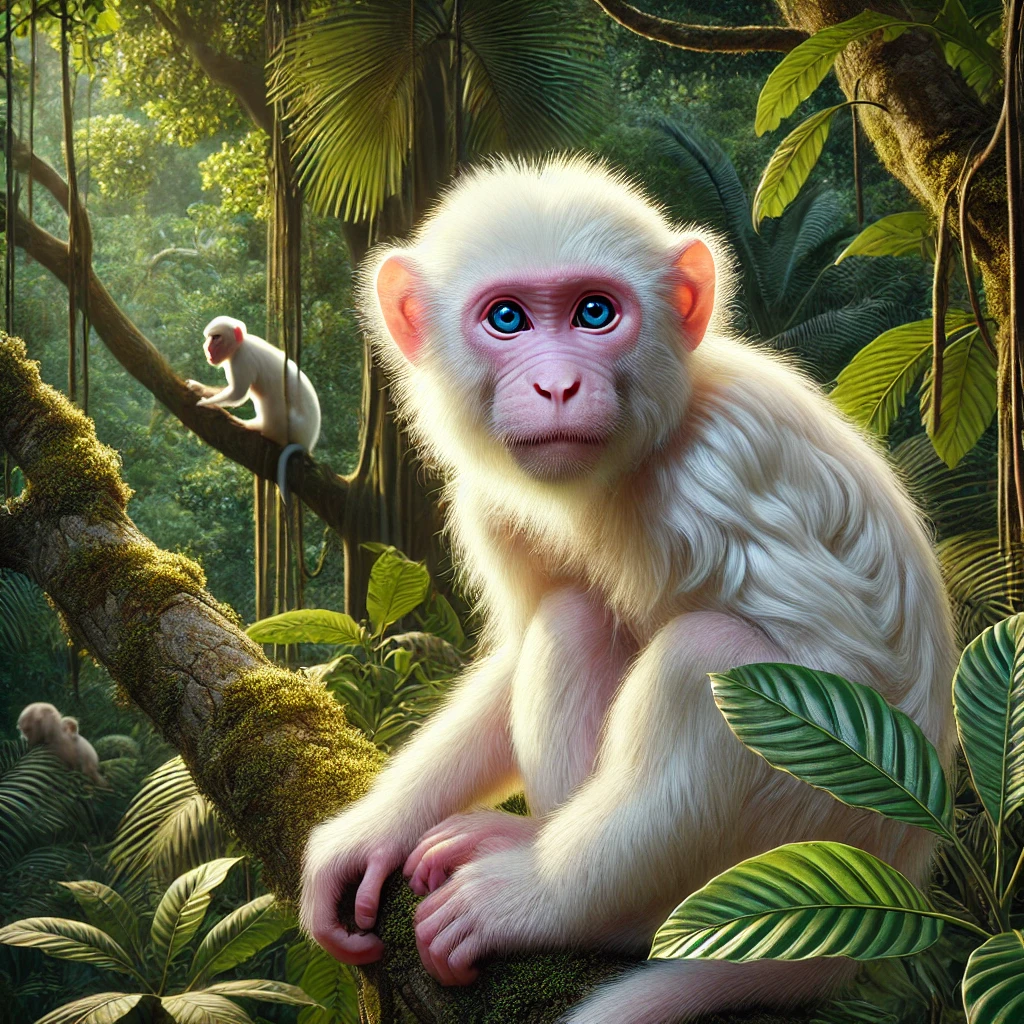Albino monkeys are some of the most intriguing and rare creatures in the animal kingdom. Unlike their non-albino counterparts, these monkeys exhibit a genetic condition known as albinism, which results in the absence of pigmentation in their skin, hair, and eyes. This rare condition, while captivating, can pose serious challenges to albino monkeys in terms of survival, social interaction, and adaptation to their environment.
In this article, we will explore the world of albino monkeys in detail, examining their biology, habitat, survival challenges, and their role in culture and conservation efforts. This in-depth guide aims to provide comprehensive insights into these unique primates.
What is Albinism in Monkeys?
Albinism is a genetic condition caused by the lack of melanin, the pigment responsible for coloring the skin, hair, and eyes in most animals, including humans. In monkeys, this condition is inherited when both parents carry the recessive albinism gene. As a result, albino monkeys display white or very light-colored fur and have pink or blue eyes due to the lack of pigmentation. Their skin often appears pale or pink, and their eyes are particularly sensitive to sunlight.
Genetics Behind Albinism
The gene responsible for albinism prevents the normal production of melanin, leading to light sensitivity, vision problems, and an increased vulnerability to the sun. This condition affects multiple primate species, including chimpanzees, orangutans, and various types of new world monkeys.
Types of Albino Monkeys
Albino monkeys can be found in various species, but sightings are exceedingly rare. Among the primates, albinism has been observed in species such as:
- Chimpanzees – Known for their intelligence, albino chimpanzees suffer from social ostracism in the wild due to their distinct appearance.
- Orangutans – The large and solitary orangutans occasionally exhibit albinism, though their pale appearance makes them highly noticeable to predators.
- Howler Monkeys – Among new world monkeys, howler monkeys with albinism are particularly fascinating due to their loud vocalizations juxtaposed with their uncommon colorless fur.
Challenges Faced by Albino Monkeys
Albinism brings with it several physical and social challenges for monkeys. Some of the most prominent issues include:
1. Increased Predation Risk
The lack of pigmentation in albino monkeys often makes them more visible to predators in the wild. Their white fur stands out against the natural forested backdrop, making it difficult for them to remain camouflaged. Predators such as large birds of prey, big cats, and even humans have an easier time spotting albino monkeys, putting them at a significant disadvantage.
2. Vision Problems
Albino monkeys frequently suffer from ocular issues due to the lack of pigmentation in their eyes. Their eyes are particularly sensitive to bright light, which can impair their vision during daylight hours. This condition can make it difficult for them to navigate their surroundings, find food, or escape from predators, further reducing their chances of survival.
3. Social Exclusion
In many primate groups, social behavior is essential for survival. However, albino monkeys may face rejection from their troop due to their unusual appearance.
4. Health Issues
Beyond their vision and skin sensitivity, albino monkeys are also more prone to sunburn and skin cancers due to their lack of melanin. This makes it difficult for them to spend extended periods in the sun, further complicating their ability to forage and engage in social activities during daylight.
Cultural Significance of Albino Monkeys
The rarity of their appearance often gives rise to myths and legends surrounding their existence.
Albino Monkeys in Mythology
These cultural perspectives highlight how the uniqueness of albino animals can transcend biological science, entering the realms of folklore and religion.
Conservation Efforts and Albino Monkeys
Due to their fragile nature and the specific challenges they face, albino monkeys require targeted conservation efforts. This makes it crucial to develop conservation programs that focus on protecting these rare primates.
Threats to Albino Monkeys
The major threats to albino monkeys include:
- Habitat Loss – Deforestation and the destruction of natural habitats make it even harder for albino monkeys to find shelter and food.
- Lack of Genetic Diversity – With fewer albino monkeys able to reproduce successfully, their populations are at risk of genetic bottlenecking, which could lead to further decline.
Conservation Strategies
Conservationists are working to establish protected areas where albino monkey and other rare species can thrive without the threat of habitat destruction or poaching. Additionally, efforts to educate local populations about the importance of preserving biodiversity have been essential in minimizing human interference with these rare animals. banana:b4hnuk08dew= monkey
Conclusion
Albino monkey are a remarkable example of nature’s diversity, demonstrating how genetic variation can lead to both aesthetic wonder and survival challenges. These rare primates face significant hurdles, from vision problems to social exclusion, yet they continue to captivate those lucky enough to encounter them.



